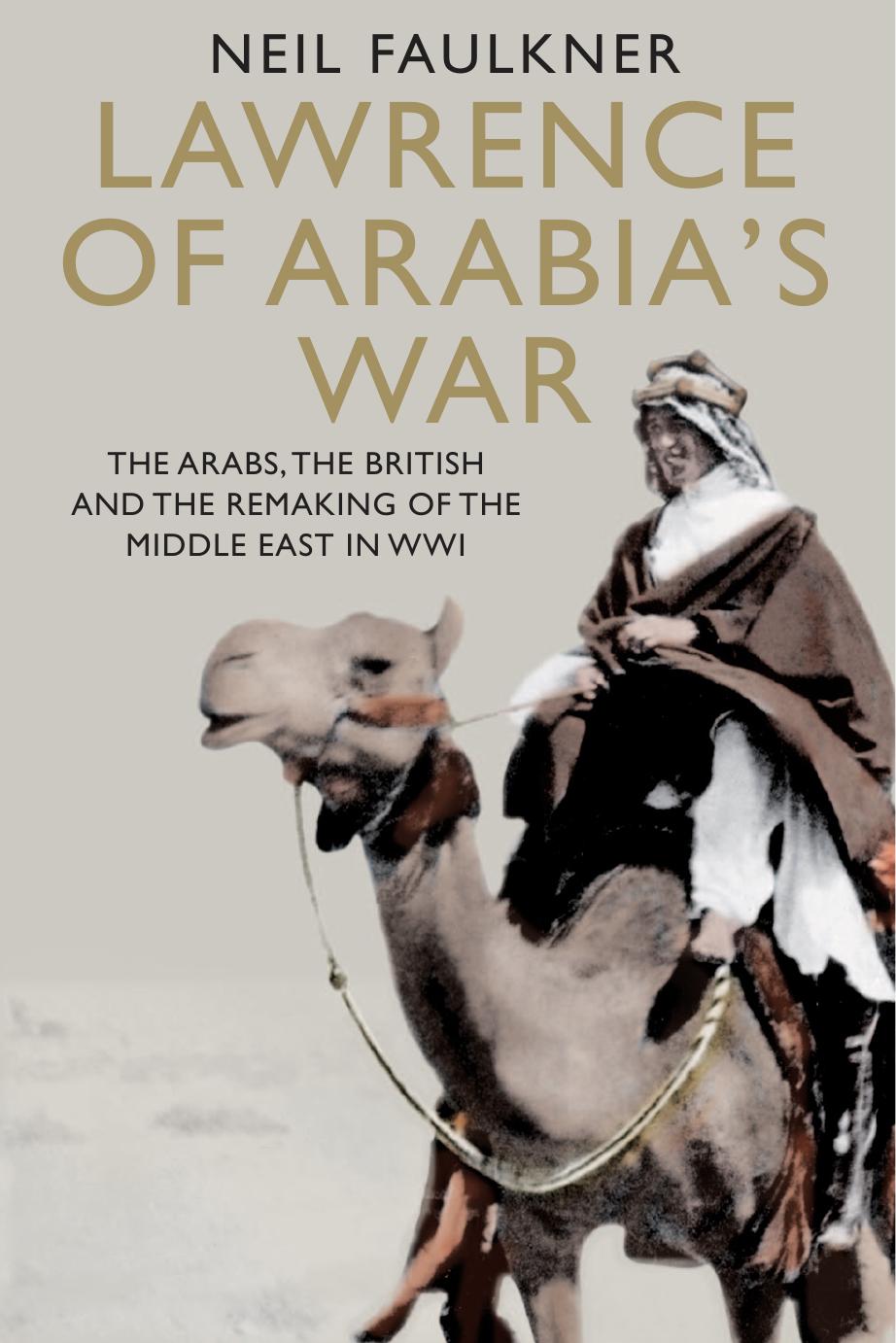Lawrence of Arabia's War: The Arabs, the British and the Remaking of the Middle East in WWI by Neil Faulkner

Author:Neil Faulkner [Faulkner, Neil]
Language: eng
Format: epub, pdf
Tags: Biography & Autobiography, Military, History, World War I, Modern, 20th Century
ISBN: 9780300196832
Google: aScVDAAAQBAJ
Amazon: B01EUYN6L6
Publisher: Yale University Press
Published: 2016-01-15T00:37:34.757000+00:00
14. The Second Battle of Gaza, 19–20 April 1917, showing the situation at zero hour.
The Eastern Frontier Force was not well prepared for such a battle. For sure, units left behind in March were now brought forward, putting 7,000 more men into the line, and doubling the number of guns: the Ottomans would be outnumbered in the coming battle two-to-one.92 But the plan was to launch a grand assault along some 15,000 yards of front. Three infantry divisions, each with two brigades up and one in reserve, were to advance side by side, the 53rd Welsh through the sand dunes, 52nd Lowland direct on Ali Muntar, and 54th East Anglian towards the open ground beyond.
This would be the main attack. But to pin the Ottomans in their eastern redoubts and prevent them reinforcing Gaza, the line was to be extended by the Camels, Imperial Mounted and Anzac Mounted: lack of manpower meant that Murray was being forced to use his cavalry as infantry. With 170 guns, there were only enough for 1 per 100 yards of front – compared with, for example, 1 per 12 yards of front at the Battle of Arras. Nor were the guns of adequate calibre. No less than 154 of them were the 18-pounder field-guns or 4.5-inch howitzers of the divisional artilleries. Except for the guns of the French cruiser Requin and two British monitors off the coast, the only medium guns available – capable of smashing trenches – were twelve 60-pounders and two 6-inch and two 8-inch howitzers.93 Even these, in the event, underperformed – partly because the Royal Flying Corps had only twenty-one serviceable aircraft available and could not meet the demand for aerial observation.94 The Ottoman artillery, by contrast, had been registered on the approaches in the weeks before the battle, and was to be wireless-directed by German and Austrian pilots during the fighting.95
Nor did the British have enough shells to sustain a long bombardment. Murray was planning an industrial battle without an industrial stockpile. The British supply problem remained acute. By digging in along the Gaza–Beersheba line and shutting the British out of southern Palestine, Kress was denying them access to the region’s water, fodder and food reserves (in that order of importance). Though the railway and water-pipe had by now reached Deir al-Belah, just 5 miles short of the Wadi Ghuzze, and though carrying-capacity was being augmented by seaborne transport, the logistical strain was extreme. The supply-line itself was consuming most of what it carried. Of the 600,000 gallons of water a day being pumped from Kantara on the canal, for example, only 137,000 reached the end of the 120-mile pipeline, and from there only 37,000 reached the troops in the front-line, the rest being consumed by the railway, the technical staff, the labourers and the animals along the way.96 What did reach the terminus then had to be transported the remaining distance to the front by camel-train. The improvement on the situation during the March battle was marginal. Prodded
Download
Lawrence of Arabia's War: The Arabs, the British and the Remaking of the Middle East in WWI by Neil Faulkner.pdf
This site does not store any files on its server. We only index and link to content provided by other sites. Please contact the content providers to delete copyright contents if any and email us, we'll remove relevant links or contents immediately.
| Afghan & Iraq Wars | American Civil War |
| American Revolution | Vietnam War |
| World War I | World War II |
Waking Up in Heaven: A True Story of Brokenness, Heaven, and Life Again by McVea Crystal & Tresniowski Alex(37676)
Empire of the Sikhs by Patwant Singh(22980)
We're Going to Need More Wine by Gabrielle Union(18973)
Hans Sturm: A Soldier's Odyssey on the Eastern Front by Gordon Williamson(18489)
Leonardo da Vinci by Walter Isaacson(13189)
The Radium Girls by Kate Moore(11930)
Tools of Titans by Timothy Ferriss(8225)
Educated by Tara Westover(7946)
How to Be a Bawse: A Guide to Conquering Life by Lilly Singh(7394)
Permanent Record by Edward Snowden(5743)
The Last Black Unicorn by Tiffany Haddish(5558)
The Rise and Fall of Senator Joe McCarthy by James Cross Giblin(5230)
Promise Me, Dad by Joe Biden(5089)
The Wind in My Hair by Masih Alinejad(5034)
A Higher Loyalty: Truth, Lies, and Leadership by James Comey(4851)
The Crown by Robert Lacey(4731)
The Iron Duke by The Iron Duke(4294)
Joan of Arc by Mary Gordon(4022)
Stalin by Stephen Kotkin(3883)
